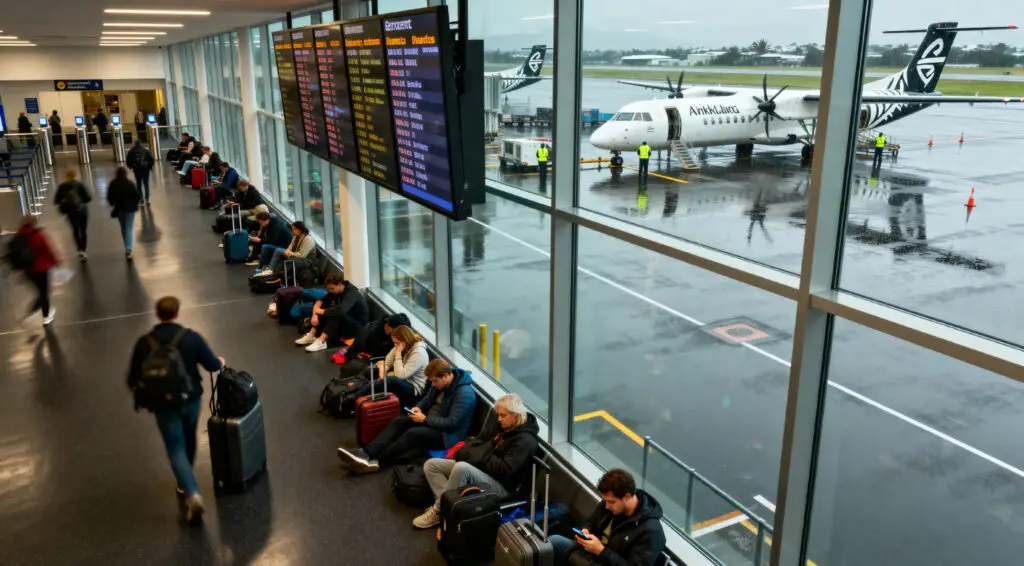Major Nationwide Delay Wave Disrupts Domestic Aviation
New Zealand experienced significant operational turbulence as more than one hundred delayed flights cascaded across multiple regions in rapid sequence. Travelers encountered extended airport downtime while waiting for replacement aircraft and rescheduled departure slots.
Passengers described frustration while repeatedly refreshing flight status screens because information changed frequently. Local media noted that disruption began quietly then rapidly multiplied as airport rotation gaps could not be corrected efficiently.
Ten Cancellations Amplified The Domestic Network Impact
Ten regional flight cancellations across two consecutive days triggered shockwaves across the Air New Zealand network. The distribution was not isolated to one region which made routing recovery significantly more complicated.
Several cancellations involved turboprop aircraft used for shorter island connections. The importance of those aircraft types in regional mobility meant the disruption affected critical feeder travel and not only trunk line city movement.
Aircraft Type Variations Complicated The Operational Challenge
Most of the grounded routes were operated by two aircraft types. The Dash eight three hundred accounted for seven cancelled flights and the ATR seventy two accounted for three.
These turboprops are vital because they handle shorter stage lengths that larger aircraft do not serve. When they become unavailable logistical recovery becomes slow since each region relies on specific size aircraft performance compatibility.
Recommended Article: China’s Record Holiday Travel Boom Highlights Consumer Strength And Expanding Domestic Spending Momentum
Auckland Hub Became The Primary Pressure Bottleneck
Auckland International Airport recorded eight affected cancellations making it the primary choke point for the entire disruption event. As the national hub Auckland connects to both islands and functions as a redistribution gateway.
When Auckland loses operational rhythm capacity imbalances cascade outward instantly. Rotorua Nelson Blenheim and Tauranga each experienced ripple effects that intensified because local airports depend heavily on inbound and outbound Auckland synchronization.
Local Tourism Operators Faced Immediate Negative Effects
Regional tourism economies rely on domestic air transport because visitors often schedule short weekend style itineraries. Losing even a single arrival block destroys pre arranged revenue from accommodation restaurants tours and rentals.
Operators therefore face financial damage in real time since cancellations reduce actual visitor arrivals not just hypothetical ticket counts. New Zealand tourism zones remain extremely vulnerable whenever regional aviation reliability collapses unexpectedly.
Affected Passengers Require Immediate Contingency Decisions
Passengers stranded during this disruption must act quickly because hotel availability near airports declines sharply when cancellations cluster. Rebooking through the Air New Zealand website or mobile application remains the fastest actionable step.
Airline policy typically allows rebooking or refunds but passengers must document all extra costs for expenses like temporary hotel accommodation or emergency food purchases because reimbursement requires proof of necessity and receipt documentation.
Regional Connectivity Issues Highlight Network Fragility
This travel disturbance shines light on how dependent New Zealand domestic connectivity is on reliable turboprop performance. Geography forces air travel to function as the primary functional bridge between cities that lack high speed rail equivalents.
Therefore even small aircraft groundings become national scale disruptions because there is no high capacity land based redundancy capable of absorbing sudden traffic diversion. Aviation reliability therefore becomes a foundational economic requirement rather than optional convenience























